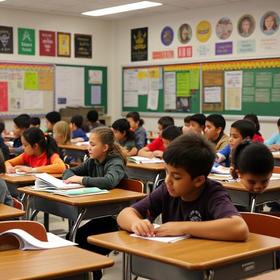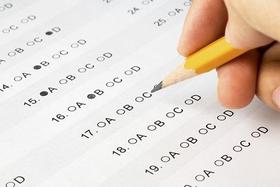Serving 16 students in grades Prekindergarten-12, Snoqualmie Access ranks in the bottom 50% of all schools in Washington for overall test scores (math proficiency is top 50%, and reading proficiency is bottom 50%).
The percentage of students achieving proficiency in math is <50% (which is higher than the Washington state average of 41%). The percentage of students achieving proficiency in reading/language arts is ≥50% (which is lower than the Washington state average of 61%).
Minority enrollment is 37% of the student body (majority Black), which is lower than the Washington state average of 52% (majority Hispanic).
Quick Facts (2025-26)
- School Type: Special education school
- Grades: Prekindergarten-12
- Enrollment: 16 students
- Minority Enrollment: 37%
- Math Proficiency: <50% (Top 30% in WA)
- Reading Proficiency: ≥50% (Top 1%)
- Source: National Center for Education Statistics (NCES), WA Dept. of Education
Top Rankings
Snoqualmie Access ranks among the top 20% of public schools in Washington for:
Category
Attribute
Community Size
School Overview
Snoqualmie Access's student population of 16 students has declined by 79% over five school years.
School Type
Grades Offered
Grades Prekindergarten-12
(No virtual instruction)
(No virtual instruction)
Total Students
16 students
Gender %
Total Classroom Teachers
n/a
Year Founded
1905
School Calendar
Last Day of School
Mon. May 25, 2026
School Motto
Together we will educate every student in a challenging, innovative, and inclusive environment, empowering them to reach their full potential.
School Rankings
The diversity score of Snoqualmie Access is 0.57, which is less than the diversity score at state average of 0.69. The school's diversity has stayed relatively flat over five school years.
Math Test Scores (% Proficient)
<50%
41%
Reading/Language Arts Test Scores (% Proficient)
(18-19)≥50%
61%
Student-Teacher Ratio
n/a
16:1
American Indian
n/a
1%
Asian
6%
9%
Hispanic
6%
26%
Black
13%
5%
White
63%
48%
Hawaiian
n/a
2%
Two or more races
12%
9%
All Ethnic Groups
Eligible for Free Lunch
19%
49%
Eligible for Reduced Lunch (15-16)
5%
7%
School Statewide Testing
School District Name
Source: National Center for Education Statistics (NCES), WA Dept. of Education
Profile last updated: 02/09/2025
Frequently Asked Questions
What schools are Snoqualmie Access often compared to?
Snoqualmie Accessis often viewed alongside schools like Issaquah Special Services by visitors of our site.
What percent of students have achieved state testing proficiency in math and reading?
<50% of students have achieved math proficiency (compared to the 41% WA state average), while ≥50% of students have achieved reading proficiency (compared to the 61% WA state average).
How many students attend Snoqualmie Access?
16 students attend Snoqualmie Access.
What is the racial composition of the student body?
63% of Snoqualmie Access students are White, 13% of students are Black, 12% of students are Two or more races, 6% of students are Asian, and 6% of students are Hispanic.
What grades does Snoqualmie Access offer ?
Snoqualmie Access offers enrollment in grades Prekindergarten-12 (No virtual instruction).
What school district is Snoqualmie Access part of?
Snoqualmie Access is part of Snoqualmie Valley School District.
School Reviews
Review Snoqualmie Access. Reviews should be a few sentences in length. Please include any comments on:
- Quality of academic programs, teachers, and facilities
- Availability of music, art, sports and other extracurricular activities
Recent Articles

How Public Schools Support Students on Free / Reduced-Lunch Programs
Explore how U.S. public schools support students eligible for free or reduced-price lunch through nutrition, academic, and wraparound services in 2025.

Hidden Costs of Public Schools: Fees, Supplies & Extras
Explore the hidden costs in public schools—fees, supplies, extracurriculars—and how parents can plan for them in 2025.

Public School Funding 2025: What Families Should Know
Essential insights on public school funding in 2025—how it works, what’s changing, and what families should know to stay ahead.





